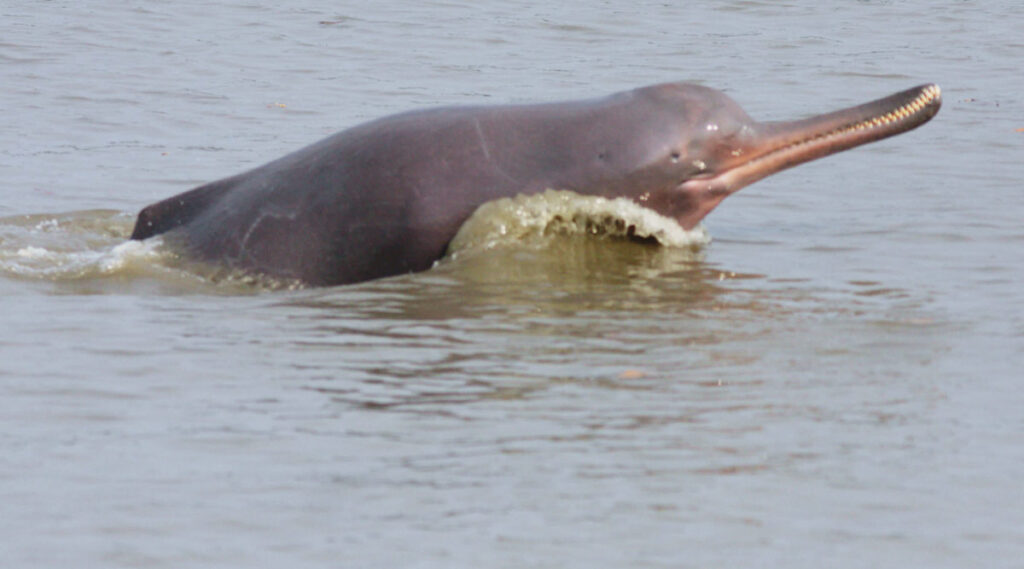
Which Country Do Dolphins Live In? Dolphins live in coastal waters and oceans worldwide, inhabiting countries such as the United States, Australia, India, and many others.
Their distribution spans across various regions, from the Atlantic Ocean to the Pacific, Indian, and Mediterranean Seas.
Welcome everyone! Dolphins are such amazing creatures, right? I mean, they’re playful and super smart, which is why people have been fascinated by them for ages.
But have you ever stopped to think about where they actually live? Well, buckle up because, in this blog post, we’re diving deep into the world of dolphin habitats. We’ll check out all the cool places they hang out and thrive in.
Table of Contents
The Global Distribution of Dolphins:
Oceans and Seas:
Dolphins are highly adaptable marine mammals found in a variety of oceanic environments worldwide.
They inhabit both saltwater and freshwater habitats, with some species even venturing into estuaries and rivers. The global distribution of dolphins spans across all major oceans and seas, including but not limited to:
1. The Atlantic Ocean: Dolphins are commonly sighted in the Atlantic Ocean, with species like the bottlenose dolphin, Atlantic spotted dolphin, and common dolphin found along the coastlines and offshore.
2. The Pacific Ocean: This vast ocean basin is home to numerous dolphin species, ranging from the iconic killer whale (orca) to the playful spinner dolphin and the acrobatic Pacific white-sided dolphin.
3. The Indian Ocean: Dolphins thrive in the warm waters of the Indian Ocean, where they can be found along the coasts of countries such as India, Sri Lanka, Maldives, and Australia.
4. The Mediterranean Sea: Despite being a semi-enclosed sea, the Mediterranean hosts several dolphin species, including the striped dolphin, common dolphin, and bottlenose dolphin.
Specific Regions:
While dolphins have a global distribution, certain regions are known for their particularly high density of dolphin populations.
These regions often boast favorable environmental conditions and abundant food sources, making them attractive habitats for dolphins. Examples of such regions include:
– The Gulf of Mexico: Known for its rich biodiversity, the Gulf of Mexico is home to diverse dolphin species, including the endangered West Indian manatee and the charismatic bottlenose dolphin.
– The Great Barrier Reef: This iconic coral reef ecosystem off the coast of Australia supports a myriad of marine life, including various species of dolphins such as the Indo-Pacific bottlenose dolphin and the humpback dolphin.
– The Hawaiian Islands: Surrounded by nutrient-rich waters, the Hawaiian Islands are frequented by spinner dolphins, which are known for their acrobatic displays and sociable behavior.

Coastal Areas:
Shallow Waters
Coastal areas serve as important habitats for dolphins, particularly those that prefer shallow waters for feeding, breeding, and socializing.
Shallow coastal waters provide dolphins with access to abundant prey resources, protection from predators, and opportunities for social interactions.
In these areas, dolphins can often be observed close to shorelines, engaging in activities such as hunting, mating, and playing. [Which Country Do Dolphins Live In?]
See Also: Can Dolphins Live In Brackish Water? The Ultimate Guide
Estuaries and Bays:
For some dolphin species, estuaries—where rivers and the sea meet—and bays—which provide a special fusion of freshwater and saltwater ecosystems—are essential habitats.
Dolphins can enjoy calmer waters, an abundance of food sources, and safety from choppy seas in certain protected coastal locations.
Young dolphins need estuaries and bays as vital nurseries because they offer a secure and supportive environment in which to develop.
Shark Bay in Western Australia and the Chesapeake Bay on the east coast of the United States are two examples of estuaries and bays that dolphins visit.
| Dolphin Habitats | Description | Examples of Regions |
| Oceans and Seas | Dolphins inhabit various oceanic environments worldwide, including saltwater and freshwater habitats, with some species venturing into estuaries and rivers. | Atlantic Ocean, Pacific Ocean, Indian Ocean, Mediterranean Sea |
| Atlantic Ocean | Commonly sighted dolphin species include the bottlenose dolphin, Atlantic spotted dolphin, and common dolphin. | Along coastlines and offshore |
| Pacific Ocean | Home to numerous dolphin species such as the killer whale, spinner dolphin, and Pacific white-sided dolphin. | Wide-ranging distribution |
| Indian Ocean | Dolphins thrive in warm waters along the coasts of countries like India, Sri Lanka, Maldives, and Australia. | Coastal regions |
| Mediterranean Sea | Despite being semi-enclosed, the Mediterranean hosts species like the striped dolphin, common dolphin, and bottlenose dolphin. | Throughout the sea |
| Specific Regions | Certain regions are known for high-density dolphin populations due to favorable environmental conditions and abundant food sources. | Gulf of Mexico, Great Barrier Reef, Hawaiian Islands |
| Gulf of Mexico | Rich biodiversity supports diverse dolphin species including the endangered West Indian manatee and bottlenose dolphin. | Along coastlines and offshore |
| Great Barrier Reef | Iconic coral reef ecosystem off the coast of Australia, home to various dolphin species like the Indo-Pacific bottlenose dolphin and humpback dolphin. | Coral reef habitats |
| Hawaiian Islands | Nutrient-rich waters attract spinner dolphins known for acrobatic displays and sociable behavior. | Surrounding waters |
| Coastal Areas | Important habitats for dolphins, particularly those preferring shallow waters for feeding, breeding, and socializing. | Shallow coastal waters, estuaries, and bays |
| Shallow Waters | Provides access to abundant prey resources, protection from predators, and opportunities for social interactions. | Along shorelines |
| Estuaries and Bays | Offers a unique blend of freshwater and saltwater environments, providing calmer waters, abundant food sources, and protection for young dolphins. | Chesapeake Bay, Shark Bay |
Marine Ecosystems:
Coral Reefs:
An ecosystem that is abundant in water and with a high biodiversity of both flora and fauna is the coral reef ecosystem which is known for its vibrant color patterns in the form of the corals. [Which Country Do Dolphins Live In?]
Certain types of dolphins, for instance, the spinner dolphin tend to be relatively common along the fringes of coral reefs. Such dolphins are known to use coral reef habitats for feeding, and socialization purposes and also as protection zones from predators.
Dolphins feed on reef fish, and cephalopods because coral reefs are rich in many of these prey species, the reefs, therefore, make good feeding habitats.
Besides, providing refuge to dolphins where they can rest, dolphins would also rest in the coral reefs most of the time and also interact socially with their fellow dolphins, this also helps to promote marine ecosystems.

Open Ocean:
Dolphins are highly adaptable marine mammals capable of thriving in a wide range of oceanic environments, including the vast expanses of the open ocean.
In the open ocean, dolphins are known to traverse long distances in search of food, mates, and suitable habitat. They are often encountered in offshore waters, where they may form large social groups known as pods.
The open ocean provides dolphins with ample opportunities for foraging and social interactions, as well as challenges such as navigating through deep waters and avoiding predators.
Despite the lack of physical structures like coral reefs, the open ocean is a dynamic and diverse ecosystem that supports a variety of marine life, including dolphins. [Which Country Do Dolphins Live In?]
See Also: Can Dolphins Live In Lakes? A Fascinating Exploration
Factors Influencing Dolphin Habitats:
Climate and Temperature:
Water temperature and climate remain important factors dictating the geographical distribution of dolphin species on a global scale.
Dolphins are ectothermic organisms meaning that the temperatures of their bodies depend on the temperatures of the surroundings.
Therefore, they tend to like habitats that have relatively fixed water temperatures within their thermal tolerance broadly. [Which Country Do Dolphins Live In?]
Intermediate factors including patterns of climate that are manifested in variations in ocean currents and seasonal winds shape water temperature and food availability with respect to the distribution and migrations of dolphins.
Food Availability:
Dolphin habitats are determined by the controllable factors of water and food resources. Dolphins are highly opportunistic predators that feed on a number of prey species among fish squids and crustaceans.
They tend to live in areas dominated by the high population of prey, for instance in upwelling zones where nutrients in the water tend to be concentrated and consequently support large populations of marine organisms.
Victim counts and food can cause dolphins’ populations to migrate away for food or alter their feeding conducts.

Conservation Concerns:
Habitat Degradation:
The habitats of dolphins are plagued with many hazards such as habitat degradation due to ways human beings are carrying out their activities on coastal civilization, epitomizing pollution in addition to the wiping of habitats.
Pollutants enter into coastal habitats which include industrial runoff, agricultural runoff, and marine debris that can alter the quality of water supply. [Which Country Do Dolphins Live In?]
Habitat disturbance, in the form of the loss of mangrove forests and seagrass meadows, also affects dolphins since it reduces their exclusive use areas for which they and other mesopredators need to thrive.
Conservation Efforts:
To solve these conservation issues, many programs and strategies have been started in order to aid in safeguarding the habitats of dolphins as well as the processes of thriving.
Such initiatives include the creation of marine protected areas, habitat restorations, and laws and regulations meant to decrease the human impacts on the marine environment.
Similarly, public education campaigns and community engagement refer to vital roles in promoting conservation stewardship and calling for the conservation of dolphin habitats.
We can also save this marvelous marine mammal if we all work together towards addressing the threats to dolphin habitats.
See Also: Does Dolphins Live in Antarctica? Discover the Untold Truth
Frequently Asked Questions (FAQs)
Where Do Dolphins Live?
Dolphins inhabit oceans worldwide, favoring coastal areas but also venturing into deeper waters like the Atlantic, Pacific, Indian, and Mediterranean. [Which Country Do Dolphins Live In?]
What Do Dolphins Eat?
Dolphins are carnivores, dining mainly on fish and squid, with their prey varying by location and habitat.
How Do Dolphins Communicate?
Dolphins chat through clicks, whistles, and body language, aiding in activities like hunting and socializing.
Are Dolphins Endangered?
While some species face threats like habitat loss and pollution, conservation efforts strive to protect vulnerable populations.
Do Dolphins Sleep?
Yes, they snooze with one hemisphere of their brain at a time, staying partly conscious for safety while resting.
Conclusion: Which Country Do Dolphins Live In?
Dolphins inhabit a wide array of marine environments, from coastal areas to deep-sea habitats, showcasing their adaptability and resilience.
As stewards of the ocean, it is imperative that we continue to prioritize the conservation of dolphin habitats to ensure the survival of these remarkable creatures for generations to come.

Mr. Das, a certified pharmaceutical scientist, holds a Bachelor of Science in Pharmaceutical Sciences and passionately contributes to dolphin conservation as a member of the committee in Bangladesh.


